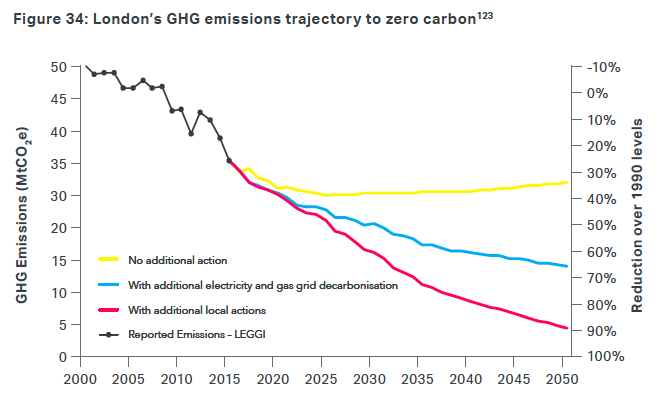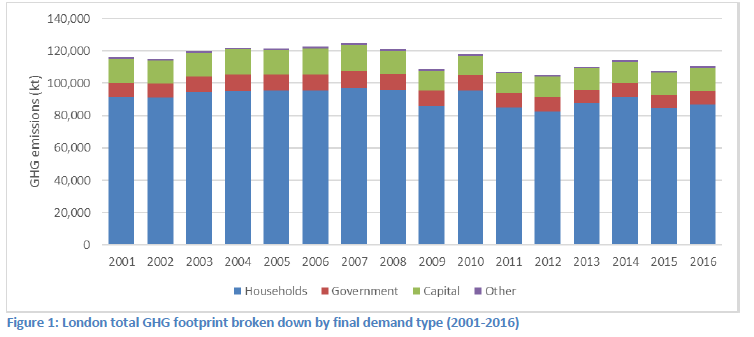March 2020: A new research paper published by the Greater London Authority (GLA) considering an issue often raised – which is what is the total impact of London’s greenhouse gas emissions, taking into account the goods and services that Londoners use.
The paper ‘Consumption based Greenhouse Gas Emissions for London
(2001 – 2016)‘ undertaken by the University of Leeds, sets out that it was commissioned to understand “the total greenhouse gas impact Londoners have, including those emissions that take place outside London’s physical boundaries, in order to tackle the climate emergency.” The methodology employed in the report allows for “emissions that occur due to the consumption activities of London residents, including all the emissions associated with the production of goods and services throughout their complete supply chain…” So what difference does it make to London’s GHG emissions when taking into account a combustion based route?
The GLA’s 2018 London Environment Strategy includes data on the capital’s GHG emissions over the period since 2000 – reproduced below.

This shows London’s GHG emissions falling from roughly 50 million tonnes of CO2e (CO2 equivalent) to around 35MtCO2e by 2015. In contrast, Figure 1 from the combustion based methodology reports the following:

The time series shown shows that when consumption emissions are taken into account – emissions over the past 15 years have varied between approximately 120 million tonnes and 115 million tonnes – ie over three times of that typically measured for ‘direct’ emissions from London’s housing, non-domestic and transport emissions.
Defra produce similar emissions consumption data for the UK in their annual ‘carbon footprint’ report – the latest of which was published a few weeks ago and is available here.

